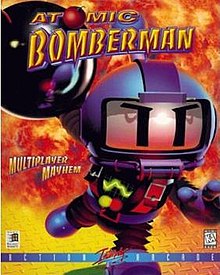
Hexen: Beyond Heretic is a fantasy first-person shooter video game developed by Raven Software and published by id Software distributed through GT Interactive on October 30, 1995. It is the indirect sequel to 1994's Heretic, and the second game in Raven Software's "Serpent Riders" trilogy, which culminated with Hexen II. The title comes from the German noun Hexen, which means "witches", and/or the verb hexen, which means "to cast a spell". Game producer John Romero stated that a third, unreleased game in this series was to be called Hecatomb.

Starsiege: Tribes is a first-person shooter video game. It is the first of the Tribes video game series and follows the story from Metaltech: Earthsiege and Starsiege. It was developed by Dynamix and published by Sierra On-Line in 1998. An expansion pack, Tribes Extreme, was cancelled; it was supposed to add single-player missions, multiplayer maps, and bot AI.

Die by the Sword is a swordfighting action-adventure video game developed by Treyarch and published by Interplay Productions under their Tantrum Entertainment imprint on March 27, 1998. The game allows players to independently command the movement and swordfighting of their in-game avatars; running, jumping and turning with one hand, while simultaneously slashing, stabbing and parrying with the other. Die by the Sword also offered deathmatch and cooperative multiplayer play in its arena mode, where players could stage fights with up to three other players.

Saturn Bomberman is an action video game by Hudson Soft for the Sega Saturn as the name implies. The twelfth installment in the Bomberman series, it was first released in Japan on July 19, 1996, in Europe in May 1, 1997, and in North America in September 4, 1997. It is best known for its multiplayer functionality for up to ten players. The game received praise from critics for its enjoyable gameplay and multiplayer, but received criticism for not advancing the Bomberman series enough beyond previous installments.

4x4 Evo is a video game developed by Terminal Reality for the Windows, Macintosh, Sega Dreamcast, and PlayStation 2 platforms. It is one of the first console games to have cross-platform online play where Dreamcast, Macintosh, and Windows versions of the game appear online at the same time. The game can use maps created by users to download onto a hard drive as well as a Dreamcast VMU. All versions of the game are similar in quality and gameplay although the online systems feature a mode to customize the players' own truck and use it online. The game is still online-capable on all systems except for PlayStation 2. This was Terminal Reality's only video game to be released for the Dreamcast.

Madden NFL 98 is a 1997 football video game. It was the last edition of the Madden series to be released for the Super NES, Genesis and Sega Saturn platforms, as well as the last Madden game to utilize 2D sprites for the players and referee, on 3D playing fields.
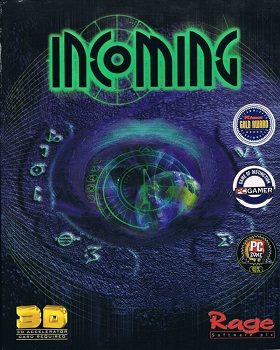
Incoming is a 3D shooter video game developed and published by Rage Software. The game was first released for Microsoft Windows in mid-1998, and was followed by a Dreamcast version, which was released in Japan on December 17, 1998, in Europe on October 14, 1999, and in North America on September 15, 1999. Set in the near-future of 2009, the game primarily revolves around controlling vehicles and turrets to fight alien invaders of Earth in one of the campaign modes, the arcade mode, and with or against another player. Some levels include brief real-time strategy segments.

Sacrifice is a real-time strategy video game published by Interplay Entertainment in 2000 for Microsoft Windows platform. Developed by Shiny Entertainment, the game features elements of action and other genres. Players control wizards who fight each other with spells and summoned creatures. The game was ported to Mac OS 9.2 in 2001.

Armored Core is a 1997 third-person shooter mecha video game developed by FromSoftware and published by Sony Computer Entertainment for the PlayStation. The game is the first entry in the Armored Core series. A digital port was released in 2007 in Japan and 2015 in North America on the PlayStation Network as a part of the PSone Classics line of games.
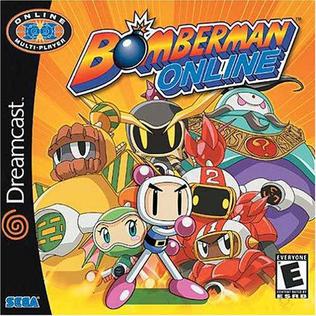
Bomberman Online is a multiplayer video game developed for the Dreamcast console platform. The game is part of the Bomberman franchise and includes various multiplayer game modes. The game's online servers were shut down in 2003, restricting players to offline-only multiplayer modes.

Frogger 2: Swampy's Revenge is an action video game developed by Blitz Games and published by Hasbro Interactive for the PlayStation, Game Boy Color, Microsoft Windows, and Dreamcast. The game is part of the Frogger series, and the sequel to the 1997 remake of Frogger, featuring similar 4-way movement gameplay in a 3D world and 6 different environments. Unlike its predecessor, Frogger 2 features a choice of different characters to play with in the game, several multiplayer modes, and an in-game storyline. A Nintendo 64 port of the game was planned, but was later cancelled.

South Park Rally is a kart-style racing video game released in early 2000 based on the American animated sitcom South Park published by Acclaim Entertainment and released for the PlayStation, Microsoft Windows, Nintendo 64, and Dreamcast. Gameplay follows the player in a competitive racing championship set in the fictional town of South Park. Players are given the options for multiplayer, arcade, or championship modes, but only the championship unlocks extra features. Competition begins in South Park's 1st Rally, a circuit race around four checkpoints in the downtown area of South Park. Races get gradually more diverse, with more locations, racers, and elements added as the game progresses.

Bomberman '93 is a video game in the Bomberman series. It was released on the PC Engine on December 11, 1992 in Japan, with western TurboGrafx-16 releases following in 1993. The game was also re-released for PCs in 2002 alongside the TurboGrafx-16 version of Bomberman and Bomberman World as part of a compilation disc titled Bomberman Collection. The game was re-released for the Virtual Console, with full multiplayer capability intact, for Wii on November 21, 2006 in North America, December 8, 2006 in Europe, and July 6, 2007 in Australia. The game was re-released for the Wii U on December 28, 2016 in Japan, November 30, 2017 in North America and December 14, 2017 in Europe. Bomberman '93 later spawned a sequel titled Bomberman '94.

Bomberman, also known as Dyna Blaster in Europe, is an action-maze video game originally developed and published by Hudson Soft for the PC Engine in Japan on 7 December 1990 and later in North America for the TurboGrafx-16 by NEC in 1991. Belonging to the Bomberman franchise, it is a re-imagining of the first game in the series starring White Bomberman on a quest to rescue Lisa, the kidnapped daughter of his inventor Dr. Mitsumori, from the castle of Black Bomberman while defeating evil monsters and villains that work for him. The game was later ported to home computers, each one featuring changes compared to the original version. Conversions for other platforms were in development but never released. The title garnered positive reception from critics since its initial release on the PC Engine/TurboGrafx-16 and later on home computers.
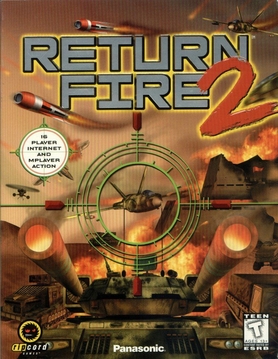
Return Fire 2 is a computer game developed by Silent Software and published for Windows by Ripcord Games in 1998. It is a sequel to Return Fire.

Warcraft II: Tides of Darkness is a fantasy real-time strategy computer game developed by Blizzard Entertainment and released for MS-DOS and Microsoft Windows in 1995 and Mac OS in 1996 by Blizzard's parent, Davidson & Associates. A sequel to Warcraft: Orcs & Humans, the game was met with positive reviews and won most of the major PC gaming awards in 1996. In 1996, Blizzard released an expansion pack, Warcraft II: Beyond the Dark Portal, for DOS and Mac OS, and a compilation, Warcraft II: The Dark Saga, for the PlayStation and Sega Saturn. The Battle.net edition, released in 1999, included Warcraft II: Beyond the Dark Portal, provided Blizzard's online gaming service, and replaced the MS-DOS version with a Windows one.
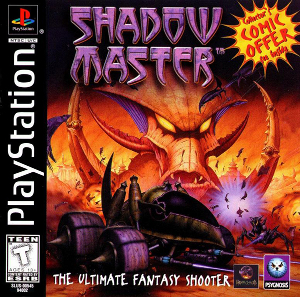
Shadow Master is a video game developed by HammerHead and published by Psygnosis for the PlayStation and Microsoft Windows. It is a first-person shooter in which the player character rides in an armed vehicle. It met with predominantly negative reviews which praised its visuals but criticized it for clunky controls and poorly designed, frustrating gameplay.
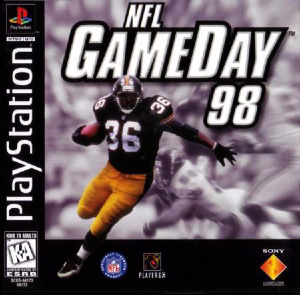
NFL GameDay 98 is the third video game in the NFL GameDay series. It was developed by Sony Interactive Studios America and published by Sony Computer Entertainment for the PlayStation in 1997. On the cover is Jerome Bettis.
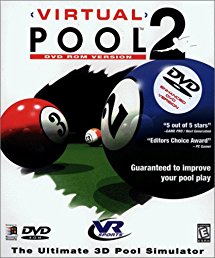
Virtual Pool 2 is a 3D, first-person sports simulation video game developed by Celeris and released by VR Sports on behalf of Interplay Productions in 1997. It is the third release of the Virtual Pool franchise of computer simulations of pool games developed by Celeris. VP2 is the second main series title in the Virtual Pool series, and would later be released alongside Virtual Pool 1.

NFL Blitz is an American football video game developed and published by Midway for the arcade in 1997, the first game in the NFL Blitz series. The development team was headed by Mark Turmell and Sal Divita, who were known for being behind NBA Jam, and NFL Blitz was a deliberate attempt to translate the exaggerated arcade-style approach of NBA Jam to the football realm. The game was ported to the PlayStation, Nintendo 64, Windows, and Game Boy Color in 1998. The cover athlete for the game was then Pittsburgh Steelers quarterback Kordell Stewart.
